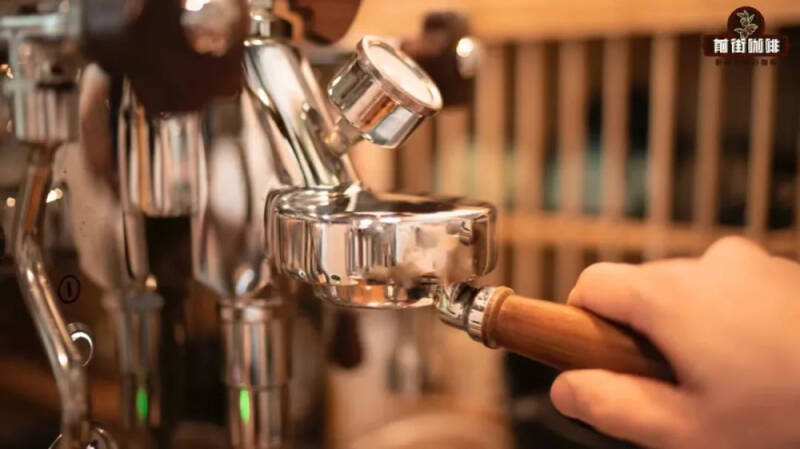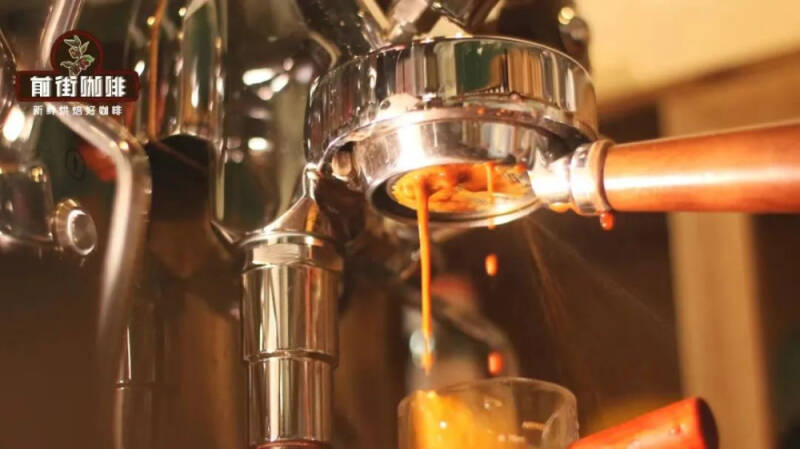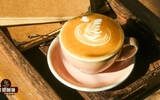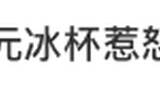What are the requirements for espresso cloth powder? What should I pay attention to when filling coffee powder cakes? What is the channel effect of extraction and concentration?
Because the pressurized extraction is special, in order to make a good espresso, we need to do some extra preparation in addition to finding the conventional extraction parameters such as grinding, time, proportion, water temperature and so on. These extra preparations are nothing more than the adjustment of the layout of the coffee powder in the powder bowl before the handle is fastened to the coffee maker.

And "cloth powder" and "pressing powder" are the "two-part" of the preparatory action. Although these two steps seem very simple, there are actually many inconspicuous small details in the process, which will affect the extraction and change the taste of coffee. So today Qianjie will share some details that we need to pay attention to in the process of cloth powder and pressing powder, and what on earth is the purpose of pressing powder and cloth powder!
Cloth powder in the final analysis, in fact, whether it is cloth powder or pressing powder, they all have a main common purpose, that is to prevent the occurrence of channel effect. Water is inert and flows to places where it is easy to flow. When the coffee powder is not evenly distributed in the powder bowl, the gap between the powder and the powder will form a lot of "channels", which will make the water concentrate on it during the extraction process, so that the hot water can not fully extract every coffee powder in the pressed powder. Finally, the coffee powder in the channel is seriously over-extracted, and the coffee powder outside the channel is seriously underextracted. The taste of coffee is both sharp and sour. And bitter, very difficult to accept.

Therefore, the first thing we have to do is "cloth powder"! When the coffee powder is poured into the powder bowl, we need to redistribute it so that the coffee powder can be evenly distributed throughout the powder bowl, so that after the coffee powder is filled, there is no channel for hot water to "slack off". However, most people usually use the handle to receive the coffee powder from the bean grinder directly, which will make the coffee powder accumulate in the center to form a "hill", or the uneven state of more left and less right. Then in these two states, Qianjie does not recommend the direct use of powder dispenser for powder distribution.
Because the powder distributor itself will form a downward pressure when it is buckled down, this force will first suppress the powder accumulated in the center, and then the powder distributor will spread out the powder that is not compacted on the surface.
In a situation like this, pressed powder looks flat on the outside, but in fact, the powder is piled up in the middle and there is very little powder around it. And pressed powder in this state, there is a high probability that there will be a channel effect in the process of extraction! Not only is there a lot of voids, but it also has something to do with the extraction of espresso. Again, water is inert, so it flows to places where it is easy to flow. And even if we spread the powder evenly and fill it well, the water still has an easy passage to flow! That is: "the edge of pressed powder", where the coffee powder borders the powder bowl.
Although it seems that pressed powder has been tightly filled and airtight, in fact, because the surface of the powder bowl is smooth and smooth, it is not completely solid with pressed powder. At pressures as high as 9bar, water flows first into these gaps, then seeps into the center and extracts the coffee powder in the center. So that's why when espresso comes out, the coffee liquid converges from the four sides to the center.
Or, we can turn off the extraction button at the beginning of the espresso, then knock out the pressed powder and cut it to observe the dry and wet state of the pressed powder, and then you will find that the top, the surrounding edges, and the bottom are all wet. only the coffee powder in the middle is dry. This is the extraction order of espresso, first on the outside, then on the inside. This also explains why the espresso we extract has an obvious sense of hierarchy, because in itself, the coffee powder is not all extracted evenly, and different amounts of sweet, sour and bitter substances are able to create a multi-layered sense.
Therefore, if the coffee powder forms a hill in the powder bowl when receiving the powder, then we had better not use the powder dispenser directly to distribute the powder. You can first use your fingers to flatten the coffee powder left and right, and then use a cloth powder dispenser to spread the powder. Of course, conditional friends (here refers to time) had better use cloth powder needle, so that coffee powder can be distributed more evenly, but also can break the caked coffee powder. In addition, we can also change the steps of powder feeding to reduce the tedious operation of powder distribution, for example, from directly using the handle to using the powder dispenser. The powder receiver will let the powder fall out from the side first, and then in the middle, which greatly reduces the tedious operation of powder distribution. But this is relatively unfriendly for stores with a high volume of cups, so you can choose to use it according to your own situation.
The role of pressing powder is to strengthen the relationship between powder and powder, so that the hot water with high impact can easily wash away the coffee powder and affect the extraction. Compared with the cloth powder link, filling coffee powder is much easier. We just need to make sure that the downward pressure is uniform and appropriate! The reason why many friends can't press pressed powder well is due to incorrect posture (such as the following picture), such as the arm is not vertical, or the force point is uneven, which is good to improve, as long as we can buy it with money-as long as we practice hard, you can master the true meaning of pressing powder!
The most common method of powder pressing is to use the thumb and index finger to occupy one side of the hammer, and then the remaining three fingers wrap the handle of the hammer with the palm of the palm, and the arm is vertical, exerting pressure down.
However, as Qianjie said, this skill requires constant practice in order to understand the true meaning, so if you do not want to use the ability of banknotes, continuous polishing is the best choice! And when we can do a good job of cloth powder and powder pressing action, it will be easier to make good espresso!
-END-
Important Notice :
前街咖啡 FrontStreet Coffee has moved to new addredd:
FrontStreet Coffee Address: 315,Donghua East Road,GuangZhou
Tel:020 38364473
- Prev

How to make three-dimensional 3D flower? How to use the carved needle of latte coffee? When was the drawing technology of espresso coffee invented?
In "Why are lattes so popular?" In this article, Qian Jie introduced that since coffee lahua was discovered and spread, sales of dairy coffee have soared. The so-called coffee drawing is to use milk foam to draw various patterns on the surface of the coffee. But you know, coffee actually
- Next

I offended everyone! Mixue Ice City urgently apologizes for the 1 yuan ice cup!
▲ Click to pay attention| Daily Boutique Coffee Culture Magazine Coffee Workshop This afternoon, the entry #Mixue Ice City 1 Yuan Ice Cup Angered Two Callers #hit the top of the hot search and became a topic of discussion in all walks of life. According to Orient Finance, after the 1-yuan ice cup in Mixue Ice City was launched, consumers who wanted to buy new products ranked third.
Related
- Why does hot American coffee taste bitter? Difference in proportional concentration between hot American and ice American
- Is espresso stored overnight in the refrigerator harmful to your body? Is frozen coffee better than freshly ground coffee?
- What parameters and proportions of water temperature should be used to grind and brew fresh coffee beans? Why can't I drink freshly roasted coffee right away?
- Customers have "changed" Manner's new products! Shop assistant: Please don't mess around!
- Remove sockets in customer areas at Starbucks stores?! Netizen: I won't go if I really tear it down
- What is the difference between the taste steps of sun-dried coffee and washed coffee? Why is sun-cured coffee sweeter and washed coffee sour?
- The recipe for salty grapefruit dirty is revealed! Coffee Festival salty grapefruit dirty coffee making materials parameters ratio milk share!
- How about the flavor of Sunlight 74158 at Sidamo Banshaha Mathieu Processing Factory in Ethiopia? 74158 Share the proportion of coffee brewing parameters!
- What effect does Italian American coffee with filter paper have? Will coffee taste better if it is put on filter paper at the bottom of the powder bowl?
- What is the color difference in coffee beans? What are the characteristics of honey processed coffee beans? Why are the anaerobically treated coffee beans uneven in color?

